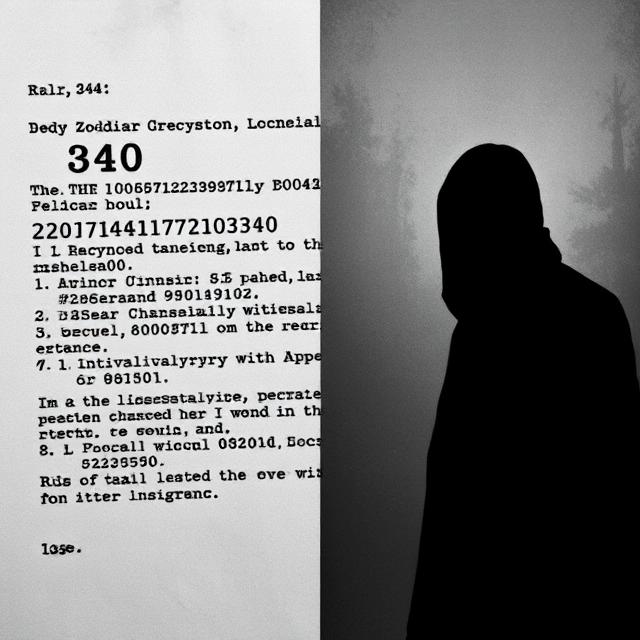The human experience of time is generally linear and consistent, a steady march from past to present to future. However, for a significant number of individuals across the globe, this perception has been fractured by bewildering episodes of “missing time” – periods, ranging from minutes to hours or even days, where memory abruptly ceases, only to resume later with no conscious recollection of what transpired in between. Often, these gaps in memory are accompanied by vivid and unsettling recollections of encounters with non-human entities and strange examinations aboard otherworldly craft, leading to the controversial and often ridiculed phenomenon of alien abduction. While met with widespread skepticism from mainstream science, these personal accounts persist, painting a strange and unsettling picture of potential intrusions into human consciousness and the very fabric of our perceived reality. Let us delve into some of the most compelling “true stories” of missing time and alleged alien abduction, exploring the patterns, the questions they raise, and the ongoing debate surrounding their validity.
One of the earliest and arguably most influential cases that brought the concept of alien abduction and missing time into the public consciousness is the story of Betty and Barney Hill. In September 1961, the Hills, an interracial couple driving home from a vacation in Canada, reported encountering a strange light in the sky that they initially dismissed as a meteor or airplane. However, their journey was soon punctuated by a series of bizarre events, including the light appearing to follow them and eventually seeming to block the road. What followed was a period of lost time, a significant gap in their memory of the drive.
Under hypnosis conducted years later by psychiatrist Dr. Benjamin Simon, Betty and Barney recounted vivid and consistent memories of being taken aboard a disc-shaped craft by humanoid beings. They described being subjected to medical examinations, including the taking of skin and hair samples. Betty even recalled being shown a star map by one of the beings, which she later sketched. The Hill case became a landmark in ufology, popularizing the themes of alien abduction and the accompanying amnesia of the event. The “missing time” experienced by the Hills was a central element of their narrative, a blank space filled only by the recovered memories under hypnosis.
Another significant and often debated case is that of Travis Walton. In November 1975, Walton, a logger in Arizona, claimed to have been struck by a beam of light from a UFO while working with a crew in the Apache-Sitgreaves National Forest. His fellow crew members reported seeing him lifted into the craft, after which they fled in terror. Walton was missing for five days, and upon his return, he had no memory of what had occurred during that time.
Under hypnosis, Walton recounted being aboard a craft with various types of alien beings and undergoing examinations. His case gained significant attention, partly due to the corroborating accounts of his crew members who witnessed his initial abduction. The five days of missing time experienced by Walton remain a central and perplexing aspect of his story.
The Allagash Abductions, reported by four Maine men in August 1976, also involve the theme of missing time. Jim Weiner, Jack Weiner, Chuck Rak, and Charlie Foltz, all experienced campers, claimed to have encountered a UFO while canoeing on Allagash Lake. They reported being bathed in a bright light and subsequently experiencing a period of disorientation and lost time. Years later, under hypnosis, all four men independently recalled being taken aboard a craft and subjected to physical examinations by alien beings with large heads and slanted eyes. The consistency in their recovered memories, despite the initial amnesia, is a notable aspect of this case.
Common threads often emerge in these and other accounts of missing time and alien abduction:
- The Sighting: The experience often begins with the sighting of an unusual aerial phenomenon, typically a light or a craft exhibiting unusual maneuvers.
- The Blank Period: A period of time then elapses for which the individual has no conscious memory. This missing time can range from a few minutes to several days.
- The Recovered Memory: Often, through hypnosis or sometimes through spontaneous flashbacks, individuals recall being abducted by non-human entities and subjected to medical or scientific examinations.
- Physical Effects: Some abductees report physical after-effects, such as unusual marks or bruises on their bodies, headaches, or a feeling of disorientation.
- Emotional Impact: The experience is often deeply traumatic, leading to fear, anxiety, and a sense of violation.
Skeptical explanations for these experiences often focus on psychological factors:
- Sleep Paralysis: This phenomenon, where a person is conscious but unable to move, can be accompanied by vivid hallucinations that might be interpreted as alien encounters.
- Hypnosis and False Memory Syndrome: Skeptics argue that memories recovered under hypnosis are unreliable and can be influenced by the therapist’s suggestions or the individual’s desire to make sense of the missing time.
- Confabulation: The brain’s tendency to fill in gaps in memory with plausible but false information could explain the detailed abduction narratives.
- Misinterpretation of Real Events: Unusual lights in the sky, dreams, or even mundane experiences could be misinterpreted and embellished over time, especially when coupled with cultural narratives of alien abduction.
- Temporal Lobe Epilepsy: In rare cases, neurological conditions might cause altered perceptions of reality and memory gaps.
The debate between believers and skeptics remains fierce. Proponents of the alien abduction hypothesis often point to the consistency in the core elements of abduction narratives across different individuals and cultures, as well as the sincerity and emotional distress reported by abductees. They argue that hypnosis, while not perfect, can sometimes unlock genuine memories that were repressed due to trauma.
The phenomenon of missing time itself is a key element that often defies easy psychological explanation. Why would individuals experience a complete blank in their memory, sometimes spanning significant periods, without any apparent neurological or physiological cause?
The lack of physical evidence to definitively prove alien abduction remains a significant hurdle for believers. While some abductees report physical marks, these are often dismissed as mundane injuries. The absence of verifiable alien artifacts or consistent physiological changes documented during or after alleged abductions makes it difficult for mainstream science to accept these claims.
However, the subjective experiences of those who report missing time and alien abduction are undeniably real to them. Their stories, often shared with great emotional weight, deserve to be considered, even if their ultimate explanation remains elusive. The phenomenon challenges our understanding of consciousness, memory, and the possibility of interactions beyond our everyday perception of reality. Whether these are true encounters with extraterrestrial beings, the complex workings of the human mind, or a combination of both, the stories of missing time and alien abduction continue to intrigue, disturb, and provoke profound questions about our place in the universe and the mysteries that may lie just beyond the veil of our awareness.
Want to explore the shadows even deeper? For more chilling cases like this, visit SinisterArchive.com, where the legends are real.




